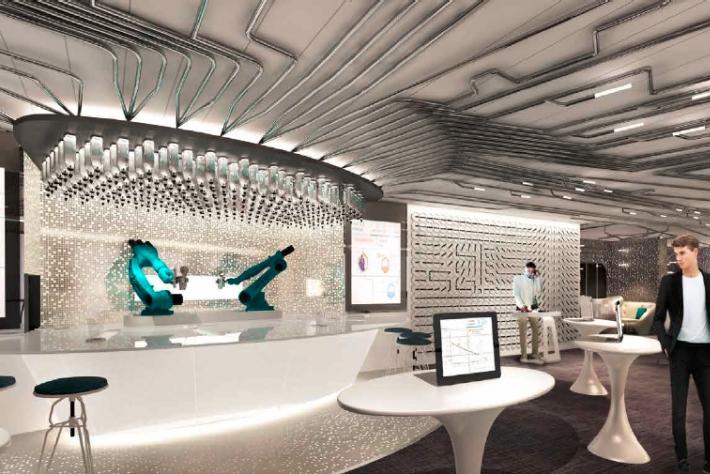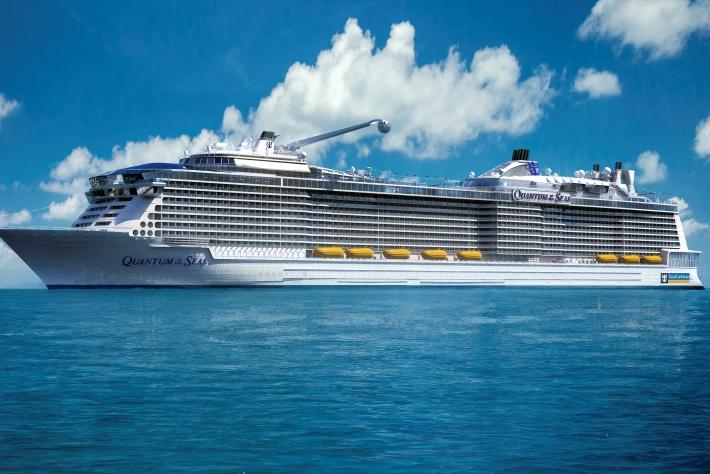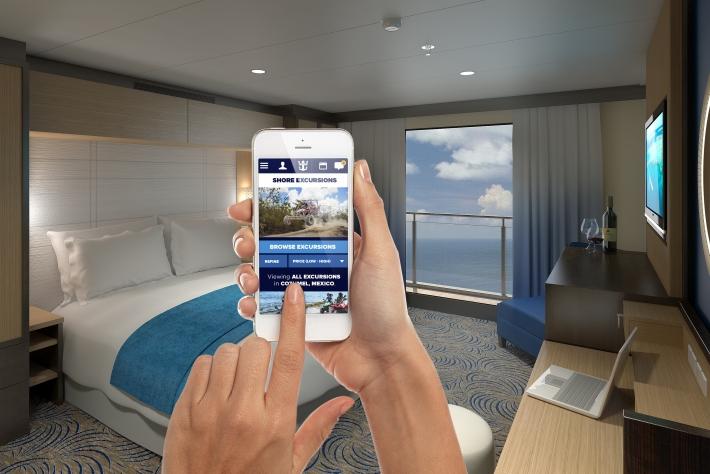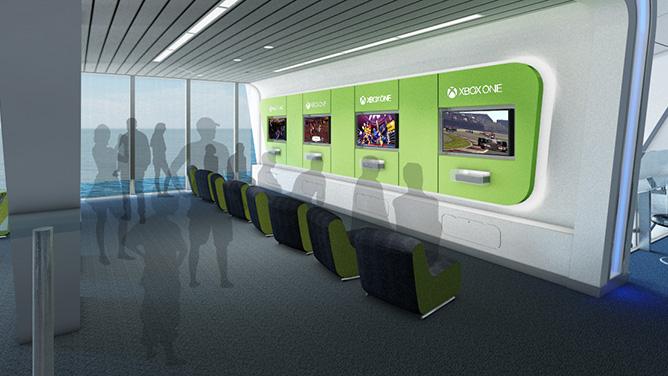
The cruise company on Monday began touting the features of its high-tech vessel – Quantum of the Seas – ahead of its maiden voyage in three months’ time.
Bionic bartenders
For many, its standout feature will be the ship’s robotic bar staffed by “bionic bartenders” – apparently the first of their kind in the world. Cocktails and other drinks can be ordered using one of the bar’s tablets, after which it’s simply a case of sitting back to watch the robots knock your order together.
Quantum of the Seas also features a futuristic venue it’s calling Two70. Here you can marvel at the transformation of its floor-to-ceiling windows into giant screens for video projection, with six seven-feet-high dancing “Roboscreens” controlled by robotic arms….we’ve reached out to Royal Caribbean in a bid to find out what in Captain Cook’s name it’s talking about here, and will update when we hear back….where guests can enjoy movies, multimedia shows, and digital-mapping presentations.
Related: Take a tour of Allure of the Seas, the world’s largest cruise ship
And here’s a neat touch – all interior rooms (ie. those without a sea view) will be kitted out with ceiling-to-floor video screens showing real-time views of the ocean. Just make sure you don’t try to dash out to view that beautiful sunset or you’ll whack your head on the wall.
“The screens – powered by the same RED Epic cinematic cameras used to shoot House of Cards, Sharknado and more – bring live, real-time views of the ocean and destinations into 375 inside rooms,” the company said Monday.
Quantum of the Seas will also feature Wi-Fi with speeds that “rival those on land,” Xbox One gaming stations, videoconferencing facilities (for workaholics, presumably), and RFID-enabled wristbands that you can use as a room key as well as to purchase items from the ship’s stores and bars.
‘Making it easy for guests’
Specially designed mobile apps, too, will make it simple for guests to do things like book on-board restaurants and land-based excursions.
“It’s all about making it easy for our guests, eliminating some of the barriers that we’ve had, eliminating the lines, and ensuring they have the ability to pre-plan their vacation as much as they want to,” Royal Caribbean’s Lisa Lutoff-Perlo said.
Described by the company as “the world’s most technologically advanced ship ever to sail,” the giant 4,180-passenger vessel will set out for the first time on November 2, sailing from Southampton in the UK to New York City.






